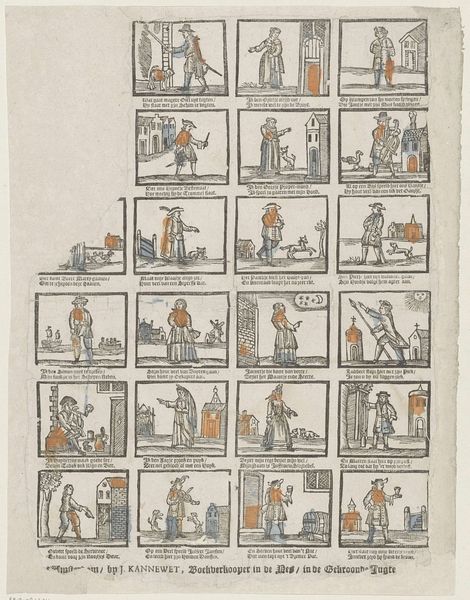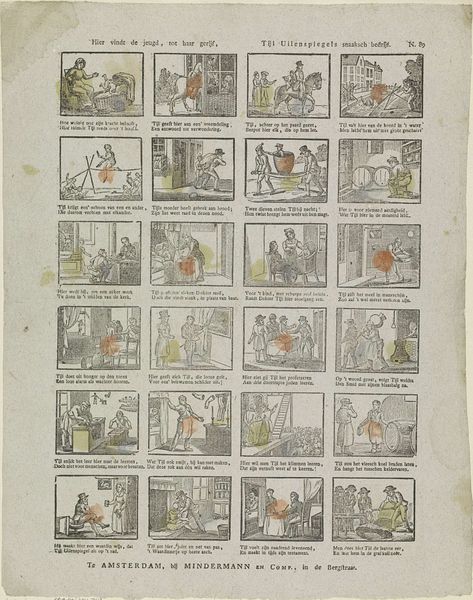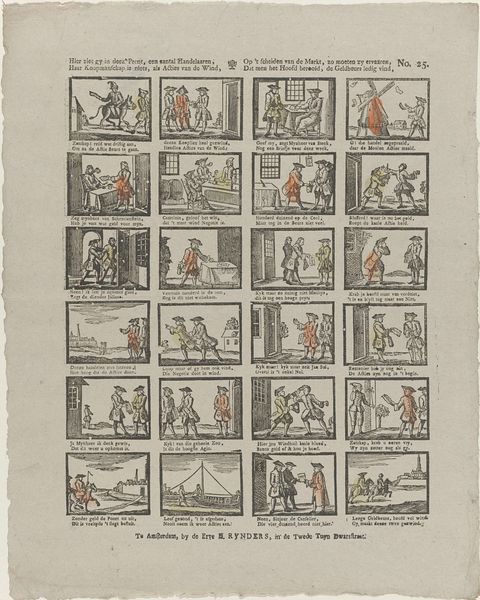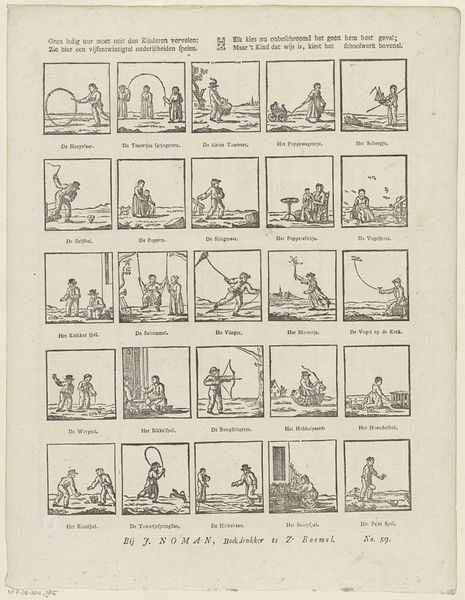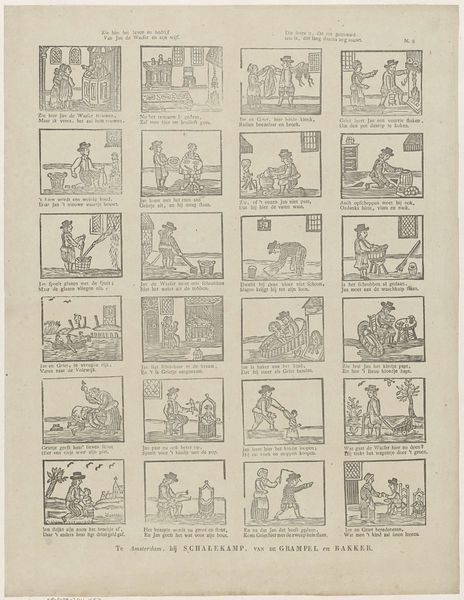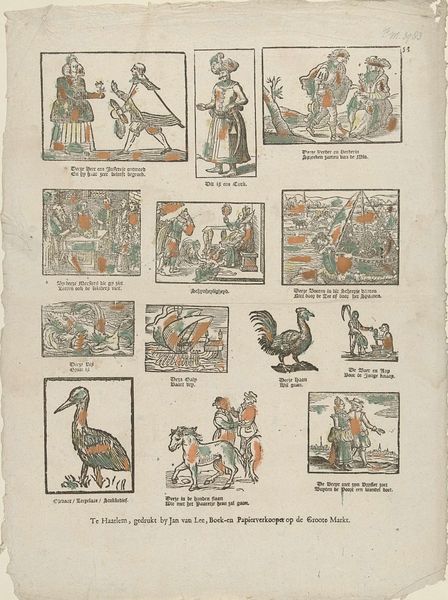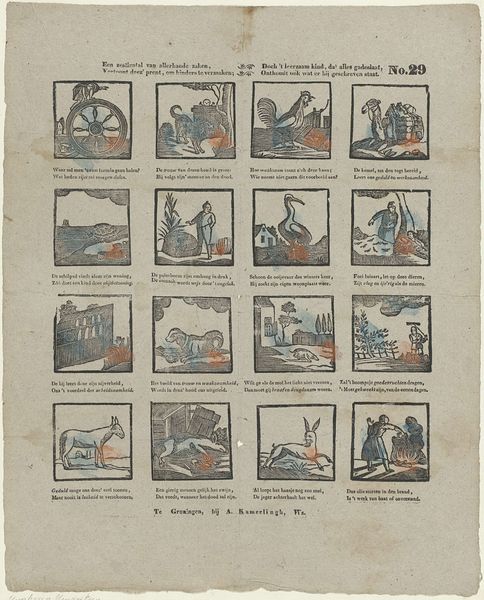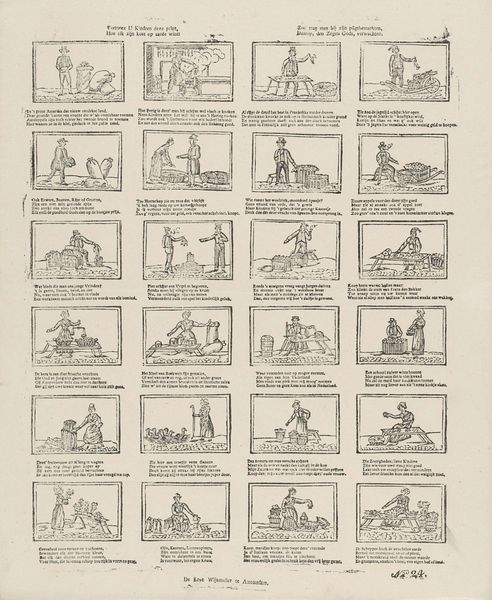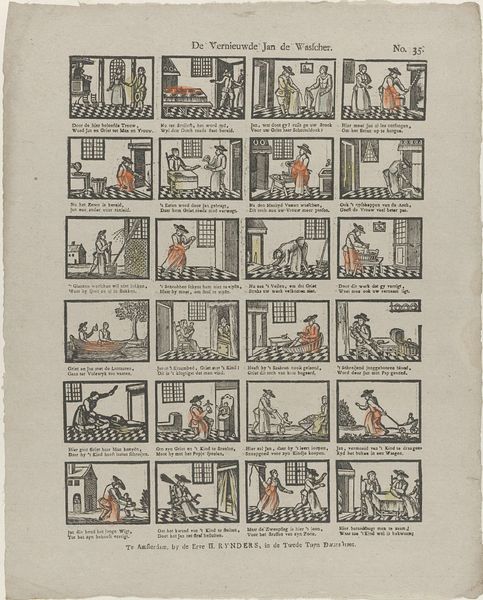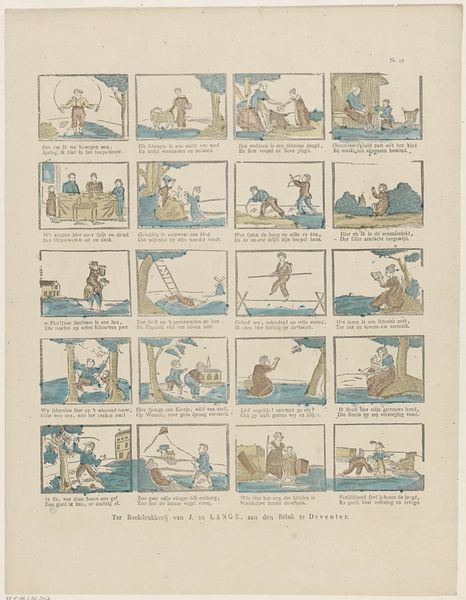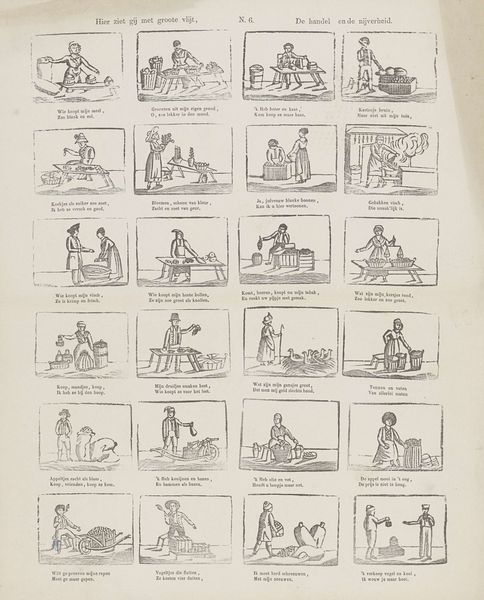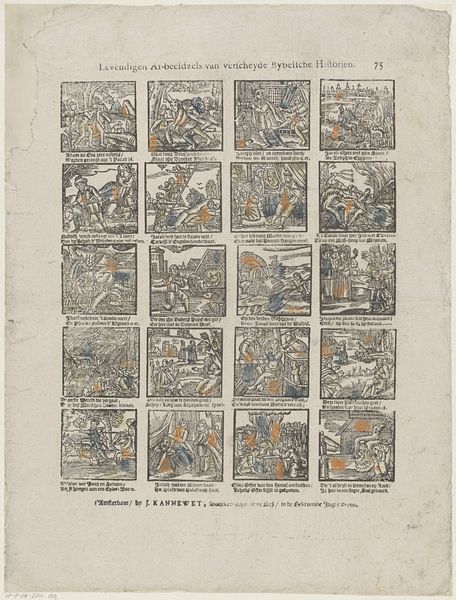
Al dat op den bedel-zak geerne leeft / Daarom den kreupelen bisschop veel diennaars heeft / 't Gaat meest al kreupel op beyde zijden / Die om een vette proef den regte gange mijden 1725 - 1780
0:00
0:00
print, woodcut
#
dutch-golden-age
# print
#
figuration
#
woodcut
#
genre-painting
Dimensions: height 410 mm, width 310 mm
Copyright: Rijks Museum: Open Domain
Curator: This woodcut print, created sometime between 1725 and 1780 by Johannes Kannewet, really speaks volumes about social dynamics of the time. Editor: It certainly presents a tableau of interesting, um, characters. Each figure seems trapped in its own little world, its own circular frame. What’s striking to me is the repetitive, almost cartoonish, rendering. How do you interpret this work, especially in relation to the era it was created? Curator: What jumps out at me is how Kannewet is using these almost caricatured figures to critique the prevailing social structures. Notice how the accompanying text points to those who "live gladly on the beggar’s bag," implying a societal dependence and perhaps even exploitation. Think about the role of patronage, and how even a "crippled bishop" has servants – power imbalances are subtly exposed here. What might this tell us about early capitalist systems of dependency and their perceived corruption at the time? Editor: So you're suggesting that these aren't just genre scenes of everyday life but a commentary on wealth and power? I initially saw them more as comical representations of different social types. Curator: Exactly! They are both. This print exists at the intersection of genre painting and social criticism. Consider, too, the positioning of the publisher's information. By placing his name and address at the bottom, Kannewet isn't just signing the work, he's making it accessible, placing himself as a purveyor of social commentary directly into the marketplace. Editor: That is so fascinating to see how art and commerce work together even in 18th century Amsterdam! Thank you for pointing out all those rich layers within such a seemingly simple piece. Curator: Absolutely. It’s in unpacking these layers of history, commerce, and cultural commentary, that we can more fully understand the enduring power of even a humble woodcut.
Comments
No comments
Be the first to comment and join the conversation on the ultimate creative platform.

